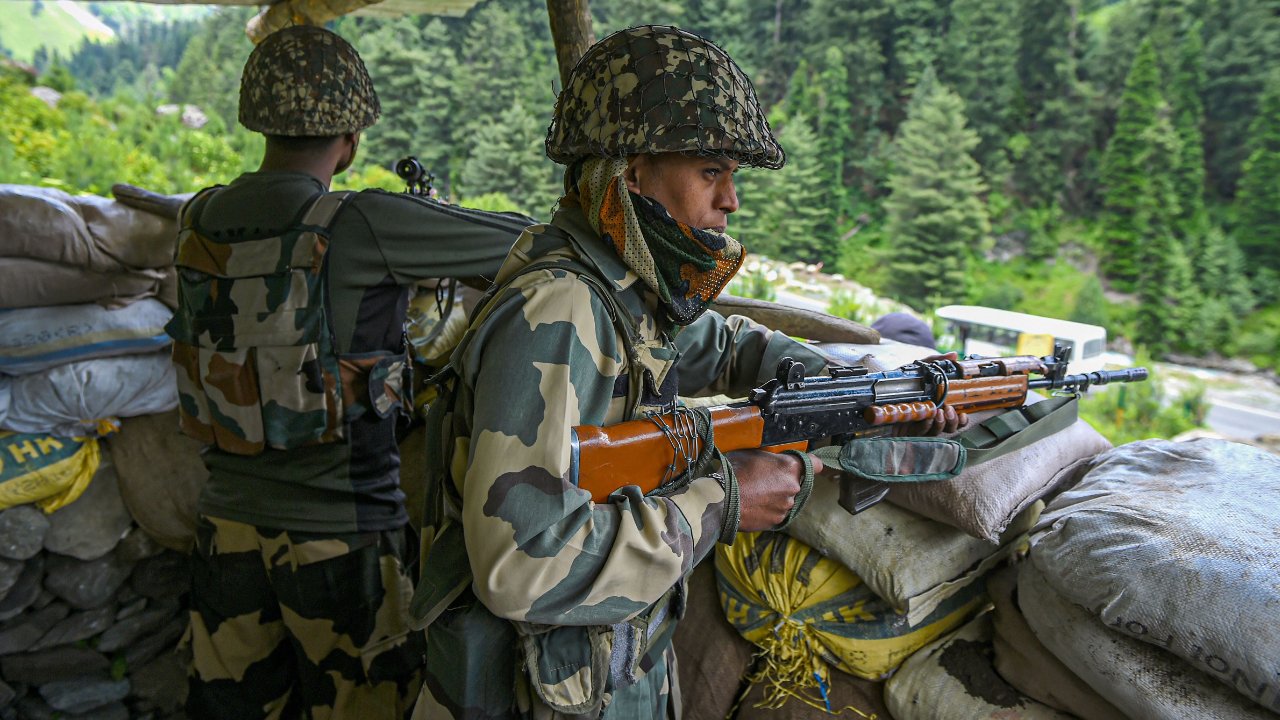
SOURCE: DHNS
Military history often knocks on contemporary doors. Galwan, Kongka La, and Pangong Tso that were areas of military contestations in 1962, with Depsang also thrown in, are emblematic of the present Sino-Indian border crisis. It was HG Wells who said, “If you fell down yesterday, stand up today.” India doesn’t seem to have learnt this lesson. In its signature style, China has used military power to grab control of unoccupied areas and called it as an act of self-defence.
Framing the background to China’s military machinations in Ladakh is a narrative of strategic communications that echoes – “We are too strong and you cannot fight us.” Arrogance derived from an assumed notion of military supremacy is aimed at winning the war without fighting, a la Sun Tzu. No fighting was required to change the status quo, for patrolling was permitted through political agreements. All it required was to violate trust, seize territory and spin the story that India was the aggressor and China’s action is purely one of self-defence.
The Chinese official and quasi-official media then calibrated its message to portray China’s readiness to fight, deftly revealing its mobilisation of theatre reserves as a threat in being. It left the rest to the Indian government and the media. It calculated that the government would play the issue down and the media imagination would run wild trying to find reasons for China’s actions.
An overarching theme that echoed loudly was – “China’s GDP is five times that of India and China is militarily too powerful.” It seemed to suggest that GDP will do the fighting in Ladakh. A crisis short of war was being conflated with war itself, because military power, like all other forms of power, is a relational variable. The ability of power to coerce is a matter of context. China can exercise its authoritarian power against the Uighurs and Tibetans but when it exercises its power against another nation, it cannot expect the same advantage. Likewise, China cannot expect to exercise naval power in the Indian Ocean with similar effectiveness that it can in the South China Sea. For power, especially military power, context has the utmost value.
China has promoted the concept of Comprehensive National Power (CNP). Its purpose was to look at CNP as an aggregate of multiple factors and move beyond the standard power assessment parameters developed in the West. The underlying objective was to use it as a tool for psychological influence to embellish political, diplomatic and military power. With China’s impressive progress in the economic, technological and military arena, CNP has been a handy tool to display strength.
China’s use of CNP as a psychological tool for coercion runs into the wall of the political will of the adversary. If CNP was a major determinant in the use of military force, why did the US lose its wars in Vietnam, Iraq and Afghanistan? Because those contexts had adversaries, who despite being outclassed in all parameters of CNP — technologically, economically and militarily — denied victory to the more powerful opponent.
In the military context of Ladakh or anywhere on the Sino-Indian border, when metal meets flesh, China’s CNP has no significance. Militarily, with limited mobilisation on both sides, in a short and intense conflict, India’s military should be able to hold its own. China’s capacity has to overcome the tyranny of altitude and terrain that is coupled with the Indian Army and Air Force’s capability. Even if they capture territory, they simply don’t have sufficient infantry to hold ground.
But military nuances are often lost in the narrative of China being strong. Rationally speaking, let alone the nuclear factor, neither India nor China can bring their entire military capacities against each other, and China certainly has more fronts to cater to. In the political context, it could have significance, if the military situation becomes a long drawn out war, the outcome could finally depend on the balance of interests, power and political will. But both countries being nuclear powers, an all-out war certainly poses its own extremely grave dangers. Therefore, when China’s CNP is cited to convey strength that demands respect and obedience, it is, in the main, an informational tool that has by itself little power in the context it is being cited in. What has relevance in terms of CNP as a relational variable cannot be measured, for it lies in the realm of the intangible and is related to human agency.
If the present strategic situation is weighed in the scale of balance of interests, India cannot afford to accept that some territory has been occupied and Sino-Indian relations can remain unaffected. China cannot afford to be seen to have faced resistance and backed down. Weighed in the balance of power, as long as India is willing to defend any further attempts to change the territorial status quo, the odds are even and works to China’s disadvantage.
India’s political leadership should exhibit and deploy the political will to resist China’s attempts of using its informational tool to coerce India’s strategic behaviour in the context of China’s struggle against the US. Going forward, even if the present issue is resolved, China can be expected to continue to create and exert pressure to keep India from being a spoiler in Beijing’s dream of being the number one global power.
China’s dream may find fulfillment when measured in a self-constructed notion of power that is mistakenly expected to find natural value without reference to the context. This is China’s grand delusion that will sooner or later stand exposed. India’s opportunity in the Himalayas is that it can play a significant role in exposing China’s grand deception. Therefore, it is not India’s military capability that is under test but its political will. Unlike post-Doklam, can the government be different this time around?






